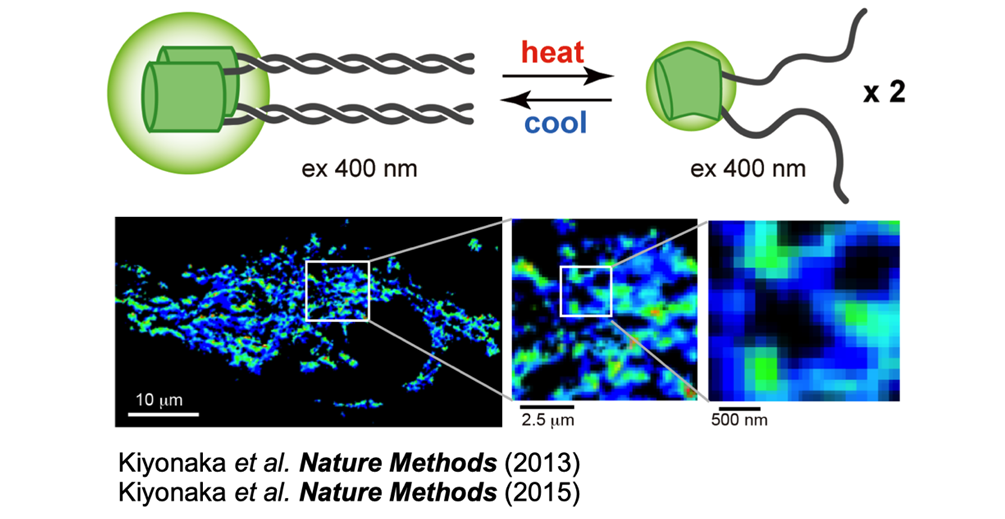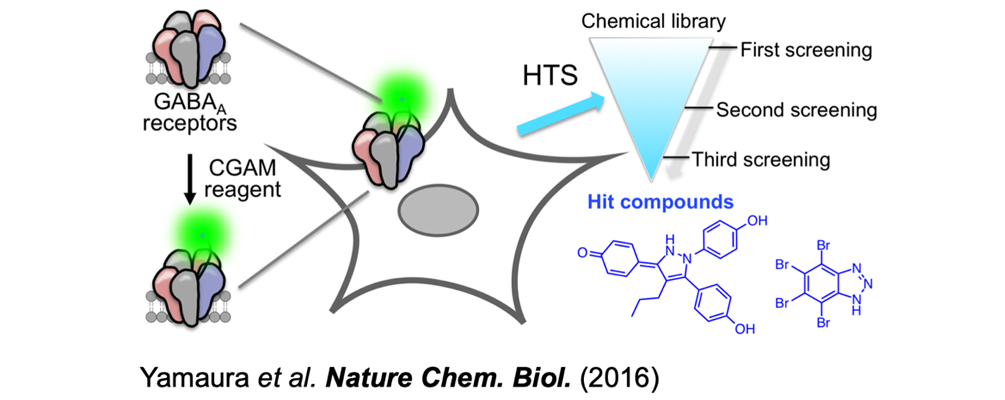Research
“Understanding Living Systems with Chemistry."
The complex functions of living systems are established through the formation of complex hierarchies and networks of cells. The typical example is brain function. Of note, recent studies have revealed that there is a functional connection between organs.
Our goal is to develop research tools and elucidate the complexity of life at the molecular level, based on chemistry. In particular, the elucidation of brain functions directly leads to the solution of important issues, such as understanding the mechanisms of memory and treating psychiatric disorders and neurodegenerative diseases.
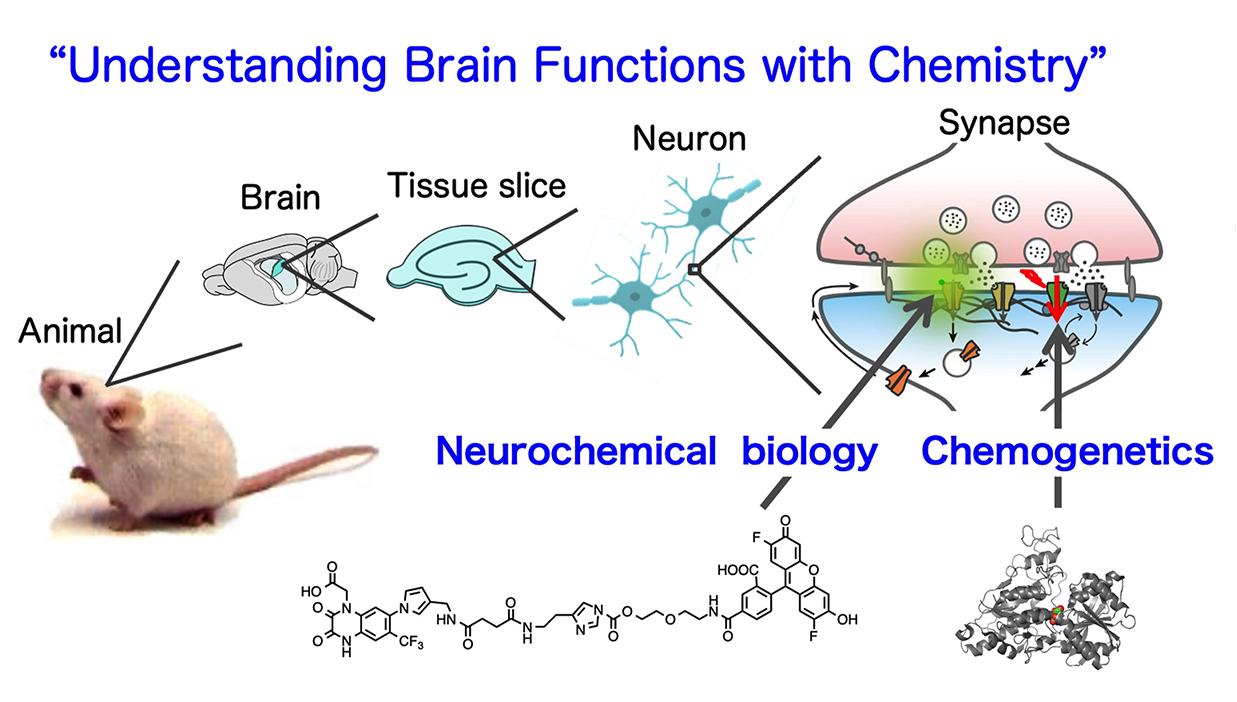
The followings are summaries of the researches we have conducted.
1. Development of new chemogenetic methods
Well-designed small organic molecules can modulate the function of targeted proteins. These are extremely useful for controlling cellular and biological functions, and are indispensable research tools in pharmacology and medicine. On the other hand, in medical and biological researches, new methodologies have been required to artificially control specific protein functions in targeted cells. Considering that an individual animal or brain tissue is composed of multiple cell types, it is necessary to clarify the function of target cells in tissues or animals. However, it is difficult to administer small organic molecules only to the targeted cells because the small molecules act in all the places where they diffuse.
In parallel with the development of organic chemistry, molecular biology and genetic engineering have made drastic progress. In fact, critical technologies such as conditional knock-in mice have been developed to modify specific protein functions in targeted cells, which is an indispensable research tool in medical and biological research. However, genetic engineering methods also have limitations, such as being irreversible and unable to control the timing of the functional switch.
Therefore, we have developed a “chemogenetic” method that combines a "chemical approach" that can reversibly control protein function at a targeted timing, and "genetic engineering" which can modify protein function in a cell-type-specific manner. Chemogentic methods allow for elucidating the function of target proteins in tissues and individual animals. In particular, it is possible to artificially control the functions of target proteins in specific cells, which would be a powerful methodology in the elucidation of memory and mental disorders.

2. Organic chemistry for clarifying biological functions
Fluorescent proteins or fluorophore-antibody conjugates are commonly utilized to visualize target proteins in cells. Of note, antibodies can visualize proteins endogenously expressed in our cells. However, antibodies have problems such as low tissue permeability because of their large size. In contrast, organic small molecules have high permeability into tissues. Thus, the small molecules can be treated in vivo, if the molecules are appropriately designed. In addition, the small-molecule-based fluorophore can be utilized for the visualization of endogenous protein by selective conjugation of the fluorophore. We are developing organic chemical approaches that can be used in vivo to elucidate new drug action mechanisms and to visualize proteins in tissues.
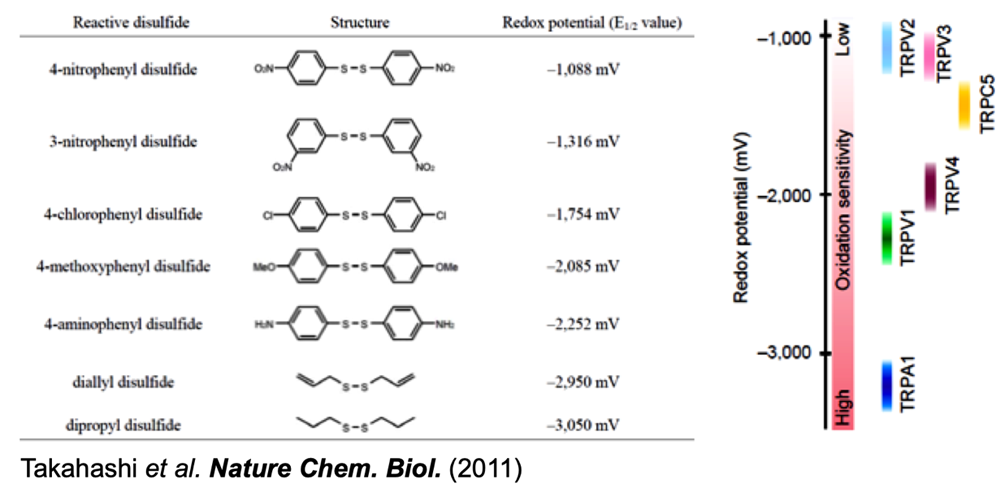
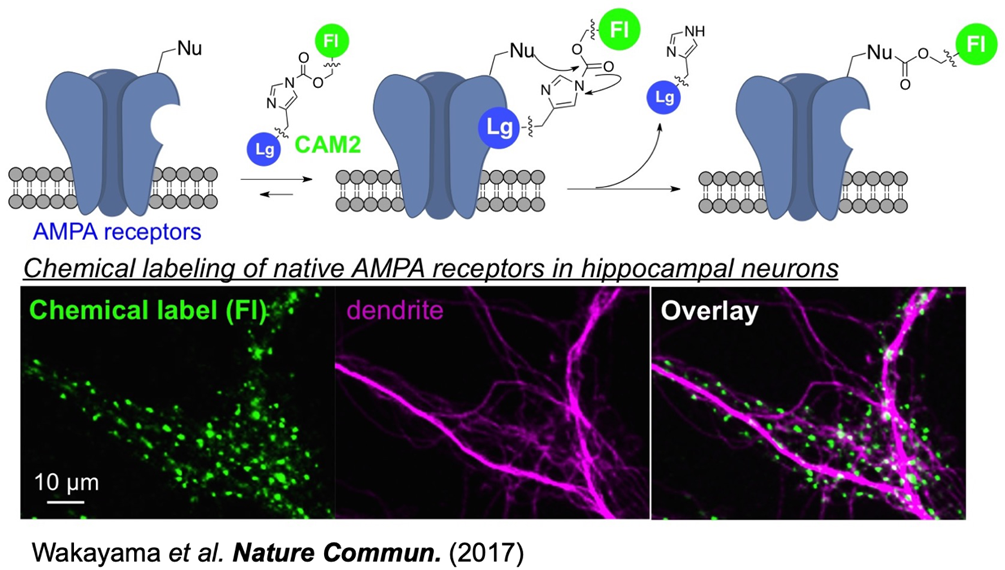
3. Visualization of cellular responses that occur locally within cells
Cellular functions are regulated by various factors such as small molecule messengers, post-translational modifications of proteins, and physicochemical parameters such as membrane potential. Development of biosensors that can visualize these changes would contribute to clarify their physiological roles. Recent studies have revealed that these intracellular factors do not change uniformly in the cell, but rather locally. Therefore, we have developed biosensors or new methodologies that can reveal local events in live cell conditions.
